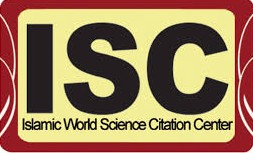الهدف العسكري المشروع واهم المباديء التي تحكمه في القانون الدولي الانساني
DOI:
https://doi.org/10.35246/jols.v30i2.217Keywords:
الهدف العسكريAbstract
The direct military attacks in international armed conflicts may be against military targets Oalohdav and civilian objects alike, and so these attacks are legitimate, so do not result in an international responsibility, must be directed to the legitimate military targets without objects and civilian objects, and then may ask international law two conditions in these goals even can be counted legitimate military objectives may strikes her, the two effective contribution to military action, and to achieve a definite military advantage when directing attacks against it, and most of the development of international humanitarian law legal principles that limit the persistence of hostile forces to strike and attack targets and objects without distinction, so as not to attack these targets, damage to civilians and civilian objects, and perhaps the most prominent of these principles, the principle of distinction, which requires the distinction between civilians and combatants and between civilian objects and military dignitaries, and the principle of proportionality between the generated feature or desired investigation of the attack and damage and its expected impact on civilians and the environment
Downloads
References
Downloads
Published
Issue
Section
License
Copyright and Licensing:
For all articles published in Journal of Legal Sciences, copyright is retained by the authors. Articles are licensed under an open access Creative Commons CC BY 4.0 license, meaning that anyone may download and read the paper for free. In addition, the article may be reused and quoted provided that the original published version is cited. These conditions allow for maximum use and exposure of the work.
Reproducing Published Material from other Publishers: It is absolutely essential that authors obtain permission to reproduce any published material (figures, schemes, tables or any extract of a text) which does not fall into the public domain, or for which they do not hold the copyright. Permission should be requested by the authors from the copyrightholder (usually the Publisher, please refer to the imprint of the individual publications to identify the copyrightholder).
Permission is required for: Your own works published by other Publishers and for which you did not retain copyright.
Substantial extracts from anyones' works or a series of works.
Use of Tables, Graphs, Charts, Schemes and Artworks if they are unaltered or slightly modified.
Photographs for which you do not hold copyright.
Permission is not required for: Reconstruction of your own table with data already published elsewhere. Please notice that in this case you must cite the source of the data in the form of either "Data from..." or "Adapted from...".
Reasonably short quotes are considered fair use and therefore do not require permission.
Graphs, Charts, Schemes and Artworks that are completely redrawn by the authors and significantly changed beyond recognition do not require permission.
Obtaining Permission
In order to avoid unnecessary delays in the publication process, you should start obtaining permissions as early as possible. If in any doubt about the copyright, apply for permission. Journal of Legal Sciences cannot publish material from other publications without permission.
The copyright holder may give you instructions on the form of acknowledgement to be followed; otherwise follow the style: "Reproduced with permission from [author], [book/journal title]; published by [publisher], [year].' at the end of the caption of the Table, Figure or Scheme.











